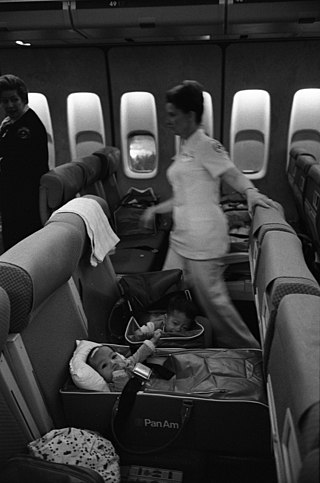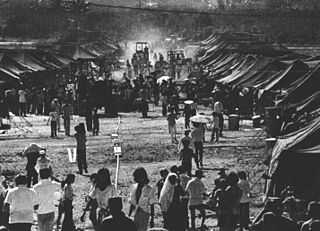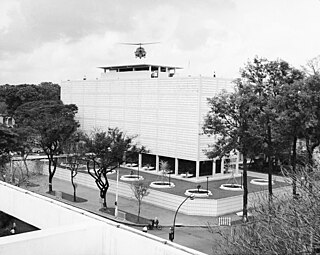John Riordan | |
|---|---|
 | |
| Occupation | Banker |
| Nationality | American |
John Riordan is an American banker credited with saving 105 South Vietnamese lives during the Fall of Saigon. He is known as the "Oskar Schindler of the Vietnam War". [1]
John Riordan | |
|---|---|
 | |
| Occupation | Banker |
| Nationality | American |
John Riordan is an American banker credited with saving 105 South Vietnamese lives during the Fall of Saigon. He is known as the "Oskar Schindler of the Vietnam War". [1]
In April 1975, Riordan was an Assistant Manager at Citibank in Saigon (modern-day Ho Chi Minh City). He was ordered to evacuate along with other Americans as North Vietnamese Army forces approached the city (then the capital of South Vietnam) during the final days of the Vietnam War. Riordan initially obeyed the evacuation orders and was flown to nearby Hong Kong.
In Hong Kong, Riordan began plotting ways to rescue his South Vietnamese coworkers, who were ineligible for evacuation (because they were not Americans) and who were likely to be executed by the Vietcong (because they were closely affiliated with Americans). He proposed numerous plans to Citibank and the US government but was repeatedly turned down. Eventually, Citibank told him to cease and desist his rescue efforts or be terminated from employment.
On April 19, 1975, Riordan flew back to Saigon alone. He gathered all of his South Vietnamese coworkers and their families (105 people in total) and hid them in his villa and a nearby villa near the city. Facing no other options, Riordan decided to claim the 105 people as his dependents so that they would qualify for evacuation aboard US military cargo planes. He applied at the evacuation office ten separate times, listing several of the 105 as his dependents each time. Riordan himself flew out with the last group a few days before the Fall of Saigon. [2]
Citibank, instead of terminating Riordan, praised his efforts and worked to resettle all of the South Vietnamese workers and find them new jobs. Nevertheless, his story was largely unknown until October 2013 when Riordan was profiled on 60 Minutes . [2]

Ho Chi Minh City, also known as Saigon, is the most populous city in Vietnam, with a population of around 10 million in 2023. The city's geography is defined by rivers and canals, of which the largest Saigon River is named after. As a municipality, Ho Chi Minh City consists of 16 urban districts, five rural districts, and one municipal city (sub-city). As the largest financial centre in Vietnam, Ho Chi Minh City has the highest gross regional domestic product out of all Vietnam provinces and municipalities, contributing around a quarter of the country's total GDP. Ho Chi Minh City's metropolitan area is ASEAN's 6th largest economy, also the biggest outside an ASEAN country capital.

Graham Anderson Martin was an American diplomat. He was the ambassador to Thailand and as U.S. representative to SEATO from 1963 to 1967, ambassador to Italy from 1969 to 1973 and the last United States Ambassador to South Vietnam from 1973 until his evacuation during the Fall of Saigon in 1975.

The fall of Saigon was the capture of Saigon, the capital of South Vietnam, by North Vietnam and the Viet Cong on 30 April 1975. The event marked the end of the Vietnam War and the collapse of the South Vietnamese state, leading to a transition period and the formal reunification of Vietnam into the Socialist Republic of Vietnam under communist rule on 2 July 1976.

USS Kirk was a Knox-class destroyer escort, originally designated as DE-1087 and reclassified as a frigate, FF-1087 (1975), in the United States Navy. Her primary mission of ASW remained unchanged. She was named for Admiral Alan Goodrich Kirk. She is in service with the Taiwanese navy as the ROCN Fen Yang (FFG-934).

Operation Frequent Wind was the final phase in the evacuation of American civilians and "at-risk" Vietnamese from Saigon, South Vietnam, before the takeover of the city by the North Vietnamese People's Army of Vietnam (PAVN) in the Fall of Saigon. It was carried out on 29–30 April 1975, during the last days of the Vietnam War. More than 7,000 people were evacuated by helicopter from various points in Saigon. The airlift resulted in a number of enduring images.

Operation Babylift was the name given to the mass evacuation of children from South Vietnam to the United States and other western countries at the end of the Vietnam War, on April 3–26, 1975. By the final American flight out of South Vietnam, over 3,300 infants and children had been airlifted, although the actual number has been variously reported. Along with Operation New Life, over 110,000 refugees were evacuated from South Vietnam at the end of the Vietnam War. Thousands of children were airlifted from Vietnam and adopted by families around the world.

The Independence Palace, also publicly known as the Reunification Convention Hall, is a landmark in Ho Chi Minh City, Vietnam. It was designed by architect Ngô Viết Thụ and was the home and workplace of the president of the Republic of Vietnam. It was the site of the Fall of Saigon on 30 April 1975 that ended the Vietnam War, when a North Vietnamese Army tank crashed through its gates.

Tan Son Nhut Air Base (1955–1975) was a Republic of Vietnam Air Force (RVNAF) facility. It was located near the city of Saigon in southern Vietnam. The United States used it as a major base during the Vietnam War (1959–1975), stationing Army, Air Force, Navy, and Marine units there. Following the Fall of Saigon, it was taken over as a Vietnam People's Air Force (VPAF) facility and remains in use today.
U-Tapao Royal Thai Navy Airfield is a military airfield of the Royal Thai Navy (RTN) approximately 140 kilometres (87 mi) southeast of Bangkok in the Ban Chang District of Rayong Province near Sattahip on the Gulf of Thailand. It is serves as the home of the RTN First Air Wing.

The 1975 spring offensive, officially known as the general offensive and uprising of spring 1975, was the final North Vietnamese campaign in the Vietnam War that led to the capitulation of Republic of Vietnam. After the initial success capturing Phước Long Province, the North Vietnamese leadership increased the scope of the People's Army of Vietnam's (PAVN) offensive and captured and held the key Central Highlands city of Buôn Ma Thuột between 10 and 18 March. These operations were intended to be preparatory to launching a general offensive in 1976.
Đỗ Kiếm, writing as Kiem Do is a former officer of the Republic of Vietnam Navy, who was serving as Deputy Chief of Staff (Operations) when Saigon fell in 1975. He secretly organised the evacuation of over 30,000 refugees aboard 32 naval ships. Kiem's efforts were ultimately successful, preventing those 32 vessels and everyone aboard from falling into the hands of North Vietnamese forces.

Operation New Life was the care and processing on Guam of Vietnamese refugees evacuated before and after the Fall of Saigon, the closing day of the Vietnam War. More than 111,000 of the evacuated 130,000 Vietnamese refugees were transported to Guam, where they were housed in tent cities for a few weeks while being processed for resettlement. The great majority of the refugees were resettled in the United States. A few thousand were resettled in other countries or chose to return to Vietnam on the vessel Thuong Tin.
The American Community School in Saigon was created in 1954, providing American style schooling for the dependent children of Americans working for U.S. government organizations in Saigon, South Vietnam. Some of those organizations included the U.S. Embassy, the U.S. aid mission (USOM), the U.S. Information Service (USIS), and the Military Assistance Advisory Group (MAAG). The school also accepted for enrollment the dependent children of private American firms operating in Saigon, as well as some non-U.S. diplomatic families. Some Vietnamese children also attended the school. The school grew rapidly as U.S. involvement in the Vietnam War escalated, but was permanently closed in February 1965 when all dependents of U.S. government personnel were ordered out of Vietnam by President Lyndon Johnson.

The United States Embassy in Saigon was first established in June 1952, and moved into a new building in 1967 and eventually closed in 1975. The embassy was the scene of a number of significant events of the Vietnam War, most notably the Viet Cong attack during the Tet Offensive which helped turn American public opinion against the war, and the helicopter evacuation during the Fall of Saigon after which the embassy closed permanently.

1975 marked the end of the Vietnam War. The North Vietnamese People's Army of Vietnam (PAVN) launched the Spring Offensive in March; the South Vietnamese Army of the Republic of Vietnam (ARVN) was quickly defeated. The North Vietnamese captured Saigon on April 30, accepting the surrender of South Vietnam. In the final days of the war, the United States, which had supported South Vietnam for many years, carried out an emergency evacuation of its civilian and military personnel and more than 130,000 Vietnamese.

The 1945–1946 War in Vietnam, codenamed Operation Masterdom by the British, and also known as the Southern Resistance War by the Vietnamese, was a post–World War II armed conflict involving a largely British-Indian and French task force and Japanese troops from the Southern Expeditionary Army Group, versus the Vietnamese communist movement, the Viet Minh, for control of the southern half of the country, after the unconditional Japanese surrender.

The Bombing of Tan Son Nhut Air Base occurred on April 28, 1975, just two days before the Fall of Saigon. The bombing operation was carried out by the Vietnam People's Air Force (VPAF) Quyet Thang Squadron, using captured Republic of Vietnam Air Force (RVNAF) A-37 Dragonfly aircraft flown by VPAF pilots and RVNAF defectors led by Nguyen Thanh Trung who had bombed the Presidential Palace in Saigon on 8 April 1975.
Jerrold B. Daniels or Jerry Daniels was a CIA Paramilitary Operations Officer (PMOO) in their Special Activities Center who worked in Laos and Thailand from the early 1960s to the early 1980s. He was known by his self-chosen CIA call-sign of "Hog." In the early 1960s, he was recruited by the CIA as a liaison officer between Hmong General Vang Pao and the CIA. He worked with the Hmong people for the CIA's operation in Laos commonly called the "Secret War" as it was little known at the time. In 1975, as the communist Pathet Lao and North Vietnamese Army advanced on the Hmong base at Long Tieng, Daniels organized the air evacuation of Vang Pao and more than two thousand of his officers, soldiers, and their families to Thailand. Immediately after the departure of Daniels and Vang Pao, thousands more Hmong fled across the Mekong river to Thailand, where they lived in refugee camps. From 1975 to 1982 Daniels worked among Hmong refugees in Thailand facilitating the resettlement of more than 50,000 of them in the United States and other countries.
John Riordan is a former banker who evacuated 105 persons in Saigon towards the end of the Vietnam War, all of whom were co-workers and dependents from his employment at a local bank in the city. During the evacuation, he claimed that all of the persons were either his wives, sons, or daughters.

Phạm Quang Khiêm was the first lieutenant, and co-pilot in the South Vietnam Air Force (VNAF) during the Vietnam War. Khiêm was a cargo pilot with the 53rd Tactical Wing of the 5th Air Division stationed at Tan Son Nhut. He flew several missions into communist-occupied Pleiku to rescue VNAF personnel. On 3 April 1975, Khiêm organized a plan to steal a C-130A and gathered 53 people to rescue them from the North Vietnamese communists. Later, Khiêm became pilot for Piedmont Airlines until 2006.